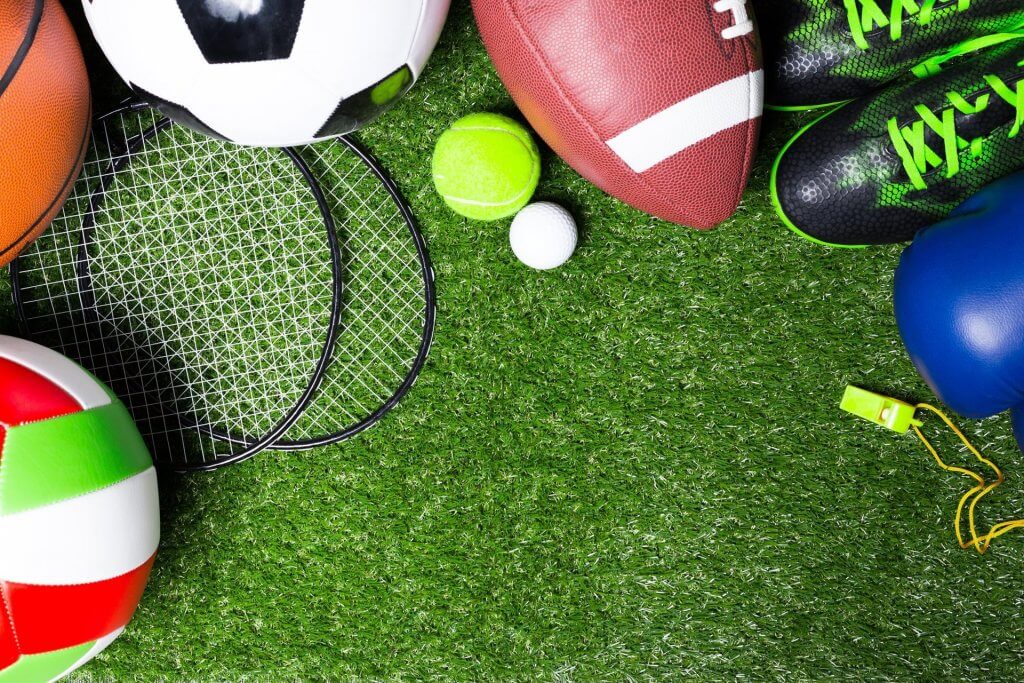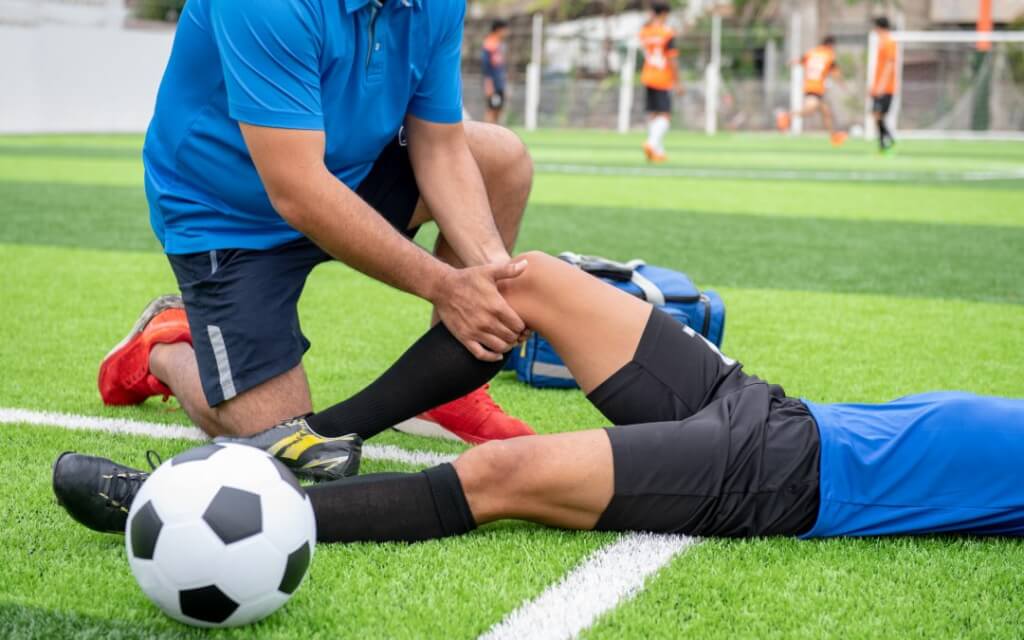
As an athlete, body fitness is of paramount importance, and maintaining it consistently throughout the season is a rather bigger challenge. But nowadays when sports are getting faster and more competitive, it’s really unpredictable when someone would get injured. In fact, injuries can occur in the blink of an eye. Although it only takes one second but its agony and impact on the body, mind, and soul last long and this fear haunts for a lifetime.
Injuries are a real nightmare for every sports and gym enthusiast. Even in their wildest dream nobody wants an injury. If you ever enquire any athlete, anywhere in the world at any point of the time in their career, regarding their biggest fear, there would be only a handful who would not name injuries. Injuries show up like termites along with their aspiring career and come to eat away talents and all hard work invested by them.
With a rush to activities after lockdown, not only sportsperson but also everybody wants to resume their life as it was in Pre-Covid time because of rebound fitness craving and an eagerness to go out. Unfortunately, they are not aware of their true capacities. They consider themselves fit but indeed their fitness level has been dropped over this period of inactivity and restrictions, which they don’t appreciate and succumb to injuries.
Injuries cause a great setback in one’s life whether it may be a commoner, fitness freak, or sportsperson. It takes a toll on their mental framework when they have to just see their teammates, friends, and colleagues in action from the side-lines with the anxiety of losing their career and impact on the future. Whether you play sports for competition or fitness or you are a commoner who just wants to stay active, nobody wants to be sidelined with an injury. Everyone dislikes being isolated or forced inactivity resulting due to injuries.
While it seems impossible to stop the occurrence of every injury, the American Academy of Orthopaedic Surgeon’s research comes as a ray of hope which says that injury rates could be reduced by 25% if athletes take appropriate preventative action. Hereon we can infer that although injuries are part and parcel of a sports career and inevitable but at least 25% of them are preventable which is really an inspiring fact. So, it’s very important to know about the prevention of these injuries.

To condition the body for sports, one should work out in the early morning or evening, when the temperature is lower and should stick with their timetable. You should adopt regular, consistent, and graduated exercise programs customized as per your activity needs. Your fitness plan should include a good blend of cardiovascular exercise, strength training, and flexibility. This will help to decrease your chances of injury.
It’s always better to meet with your primary care provider first and discuss your options before starting a new program or exercising regularly. Also, devote some time to learn the proper techniques required for your machine, sport, or program. Starting new activities with a personal trainer can be a good idea to stay safe during recovery.
The first is effective nutrition. you should eat a balanced and nutritious diet that includes a good mix of key food groups such as protein, essential minerals like calcium, potassium, and vitamins like vitamin D & B. Meal shots (Small and frequent meals between an hour and 30 minutes) are really important before your exercise to give yourself an energy kick.
Staying hydrated is of paramount importance. We all are aware of the benefits of hydration during activities but it’s also vital to maintain hydration even if you are not working out, especially when recovering. Adequate hydration is crucial to maintain health and minimize cramps and also to prevent dehydration, heat exhaustion, and heatstroke.
Sound sleep is an essential constituent of an injury prevention programme. It relieves fatigue accumulation, gives rest to the body, mind and increases attention span on the field, in this way it decreases the possibility of injury occurrence on the field. It’s important to stick with a routine so that you can have quality sleep.
A lot of people spoiled these three important basic lifestyle aspects after getting distressed from lockdown. Now when you are re-planning your activities and training, be careful about them.
Wearing protective gear such as helmets, gloves, protective pads, shin pads, etc is vital to reduce chances of injury. Wear relaxed fit and breathable fabric to help prevent overheating and good running shoes supported by Gait Analysis to counter ground reaction force on joints. It also helps to correct certain foot problems that can lead to injury.
You should always start with a gentle warm-up by stretching the relevant muscle groups before the activities. To accomplish this, Warm-up with jumping jacks, stationary cycling or running or walking in place for three to five minutes, or jogging before you start your exercise and then again afterward to help your muscles cool down slowly.
Flexibility could also be improved by stretching and it is best to do so once the body is already warm, before and after a workout. This improves the muscle’s performance and reduces the risk of injury. Start slowly and then build it gradually up to point of muscle tension. Try to hold this position for a few seconds and gradually increase this duration. Stretching should be painless, one should look into the technique they are using for stretching.
It increases blood flow to the muscles and makes them more flexible. In this way, it prepares the body for the stresses and strains ahead and promotes recovery once you have finished your exercise for the day. Injuries are more common when muscles are cold. Cold muscles are more prone to injuries. Cooldown usually takes double the time of warm-up. These extra few minutes before and after exercises can do a lot of value addition to your program and potentially reduce the risk of injuries.
Many injuries happen because of poor technique and form. Invest some time to learn your machine, sports, and correct technique. It is safe to restart exercises with a personal trainer, professional coach, and always consult your sports medicine specialist for your strength assessment before returning to sports activities.
You should reduce you’re your distance and speed for cardiovascular exercises and weight for strength training after a long pause. Take your time to regain your previous stamina and endurance. One can follow the 10 percent rule to increase your intensity, frequency, and duration to avoid injuries.
Tendency of pushing yourself beyond limits is not good for players. Given enough time to the body while regaining strength so that body can get adjusted with increasing stresses. Take appropriate rest when you feel like, identify your limits, and respond by adjusting your activities accordingly. Explore other possible ways to address it. Fatigue consumes the protective ability of muscles and makes them prone to injuries.
Learn to distinguish the difference between hard work and hurting because of an injury. While a mild and short-lived muscle ache is generally considered good pain while pain in the joints is a warning sign that you should not push hard. Do not play through the pain and slow down or stop until you recover. Somebody truly said that you can always come out to play again next weekend, if you don’t get injured today.
Injuries can derail the best-laid fitness plans. The bed rests further ruins our resolve to stick to a fitness routine. With recovery, there is rebound pampering by the family which may further complicate diet management and ends up adding extra pounds. The best alternative way to manage these injuries is the prevention of their occurrence by the above simple tips. But, if you sustain a sports injury, then take necessary medical help and complete the rehabilitation process before resuming previous activities.
By Dr. Priyank Gupta,
Sr. Consultant – Sports Injury, Ligament Reconstruction & Arthroscopy Surgeon
The shoulder is a very flexible Ball a Socket joint that is made up of several tendons, ligaments, and muscles that all work together for the normal functioning of a joint. Shoulder pain can result from injuries, general wear and tear, and...
The Psychological Impact of Injury Can you tell me about any person who doesn’t like a fairy-tale kind of miraculous recovery from an injury, with the movement of a magic wand? I bet you can’t give a single name but that’s not...
Sports injuries are characterized by an injury that occurs when you indulge in any kind of sport or exercise. Though any of your body parts can get injured when you play sports, sports injury as a term is precisely used for the...